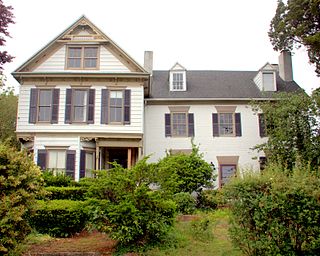
Laurel is a town in Sussex County, Delaware, United States. The population was 3,708 at the time of the 2010 census. Laurel is part of the Salisbury, Maryland-Delaware Metropolitan Statistical Area. It once hosted the Laurel Blue Hens of the Eastern Shore Baseball League.

The Russell Company Upper Mill is an historic structure in Middletown, Connecticut, at the junction of Russell Street and East Main Street in South Farms, at the end of East Main Street's commercial and industrial development areas. Built in 1836, it is listed on the National Register of Historic Places. There is a small pond to the south. Small businesses border the street to the north, followed by the buildings of Russell Manufacturing Company, the area's most dominant feature. Russell Street crosses Sumner Brook nearby and ascends to a large residential district to the west. The mill is currently a condo-apartment complex.

The Wilcox, Crittenden Mill, also known as Wilcox, Crittenden Mill Historic District, is a 17-acre (6.9 ha) property in Middletown, Connecticut that was listed on the National Register of Historic Places in 1986. It was the location of the Wilcox, Crittenden company, a marine hardware firm. The historic district listing included four contributing buildings and three other contributing sites.

The Cheney Brothers Historic District was a center of the silk industry in Manchester, Connecticut, in the late 19th and early 20th century. The 175-acre (71 ha) district includes over 275 mill buildings, workers houses, churches, schools and Cheney family mansions. These structures represent the well-preserved company town of the Cheney Brothers silk manufacturing company, the first America-based silk company to properly raise and process silkworms, and to develop the difficult techniques of spinning and weaving silk. The area was declared a National Historic Landmark in 1978.

Saylesville is a village and historic district in Lincoln, Rhode Island.

St. Bartholomew's Episcopal Church, also known as Green Hill Church, is a historic Episcopal church located near Quantico in Wicomico County, Maryland.

The Borden-Pond House is a historic house at 40 Laurel Street in Worcester, Massachusetts. Built about 1856 but probably not completed until 1861, it is a prominent early example of Second Empire architecture, and one of a small number of stone villas to survive in the neighborhood. Lucius Pond, its second owner, was an important local machinist. The house was listed on the National Register of Historic Places in 1980.

The Village of Monroe Historic District, also known as the Smith's Mill Historic District, is located in Monroe, New York, United States. It is an irregularly shaped 81-acre (33 ha) area containing 36 properties, primarily residential but with some churches and commercial buildings, in the center of the village, just east of its downtown. In 1998 it was listed on the National Register of Historic Places.

The Chipman Potato House was located near Laurel, Delaware, one of the last surviving examples of its building type. The southern part of Delaware saw a sweet potato boom from 1900 until blight struck in the 1940s. In order to store the crops, potato houses were built. The Chipman House was built in 1913 by Joseph and Ernest Chipman on their property with the assistance of Alva Hudson. The 2½ story balloon-framed house was furnished with sparse, shuttered windows and slatted floors, allowing adjustment of air circulation. Two stoves provided heat during the winter, one of which survives.

Old Christ Church, also known as Old Lightwood, is a historic Episcopal church near Laurel, Sussex County, Delaware. The 1772 church resembles its parent church, Green Hill Church of Stepney Parish in Wicomico County, Maryland, except that while Stepney was built in brick, Christ Church is of wood construction. Its weathered appearance gave rise to a nickname "Old Lightwood," although it now is painted barn red.

The Lake Linden Historic District is located in the village of Lake Linden in Houghton County, Michigan.

Hanford Mills Museum, also known as Kelso Mill, is a historic grist mill and sawmill and national historic district located at East Meredith, New York in Delaware County, New York. The district contains nine contributing buildings and three contributing structures. The complex includes both natural and structural facilities. It includes a mill race from Kortright Creek to the damned up Mill Pond which supplies the waterwheel, a spillway for the pond's overflow, a section of old (1900) New York Central Railroad track, two railroad bridges crossing Kortright Creek, and a variety of buildings. The main structure is a mill building dating to the 1820s with additions from the 1870s, 1880s, and 1890s. The four story wood-frame structure is approximately 150 feet long and 120 feet high. Also on the property is a one-story depot building with grain elevator and storage facilities. It is now operated as a museum. It was listed on the National Register of Historic Places in 1973.
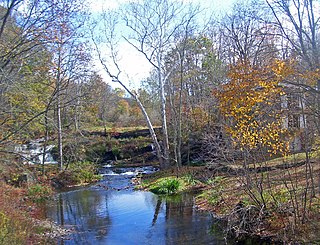
The Bloomvale Historic District is located east of the hamlet of Salt Point, New York, United States. It is a collection of buildings and structures around the intersection of Clinton Corners Road, state highway NY 82 and the East Branch of Wappinger Creek. Most of it is in the Town of Pleasant Valley; the eastern portion is in the Town of Washington.
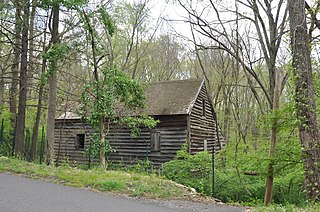
The Sylvanus Selleck Gristmill, also known as the Edwin Knapp Gristmill, is a historic gristmill at 124 Old Mill Road in Greenwich, Connecticut. Built about 1796, it is one of the oldest mill buildings in the state, and a rare surviving example of brace-frame construction. It was listed on the National Register of Historic Places in 1990.
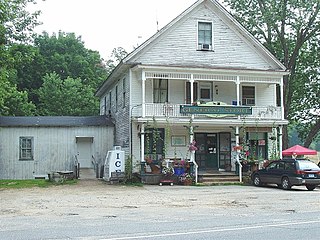
The Mansfield Center Historic District encompasses the historic early village center of Mansfield, Connecticut. First settled about 1692, it is one of the oldest settlements in Tolland County, and retains a strong sense of 18th century colonial layout. It extends along Storrs Street extending from Chaffeeville Road in the north to Centre Street in the south, and was listed on the National Register of Historic Places in 1972.

Broad Street Christian Church is a historic church building on the near east side of Columbus, Ohio, United States. The edifice was constructed in an exclusive residential neighborhood at the beginning of the twentieth century, and it has been designated a historic site. It was home for most of its history to a Disciples of Christ congregation, and is now the seat of an Ethiopian Orthodox congregation.

Old Chapel is a historic Episcopal church building located near Millwood, Clarke County, Virginia. Old Chapel is now the oldest Episcopal church building still in use west of the Blue Ridge Mountains. It was listed on the National Register of Historic Places in 1973. In 2014, the Chapel Rural Historic District was recognized, and which encompasses both Cunningham parish churches, discussed below, as well as approximately 700 other structures and an area of nearly 10,500 acres.
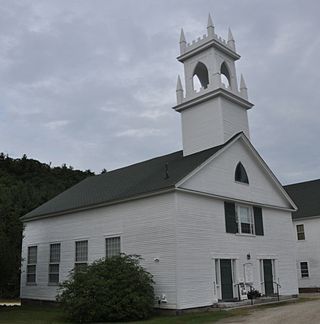
The Washington Common Historic District encompasses a cluster of three civic buildings and the town common in the center of Washington, New Hampshire. The town common began as a 2-acre (0.81 ha) parcel acquired in 1787, and the current town hall followed in 1789. It is a two-story wood-frame building which originally served as both a civic and religious meeting house. The adjacent Gothic Revival Congregational Church was built in 1840. The third structure is the Schoolhouse, a 2+1⁄2-story two-room school built in 1883. The district was listed on the National Register of Historic Places in 1986.
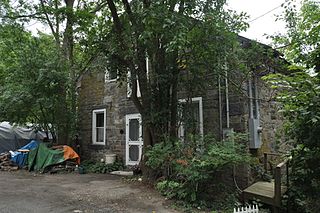
Chipman's Point is a historic 19th-century ferry complex on Chipman Point Road in Orwell, Vermont. The complex includes two early 19th-century stone warehouses, a former Lake Champlain ferry landing site, and the foundational remains of the Chipman Point Hotel. It was listed on the National Register of Historic Places in 1996.

The Wooster Sawmill and Gristmill Site is a historic industrial site on Park Road in Oxford, Connecticut. From at least 1747 until 1965 it was operated as a sawmill, gristmill, and cider mill, giving it one of the longest known histories as a water-powered mill complex in the United States. The surviving elements of the complex, its structures now converted to private residential use, were listed on the National Register of Historic Places in 2001.
























